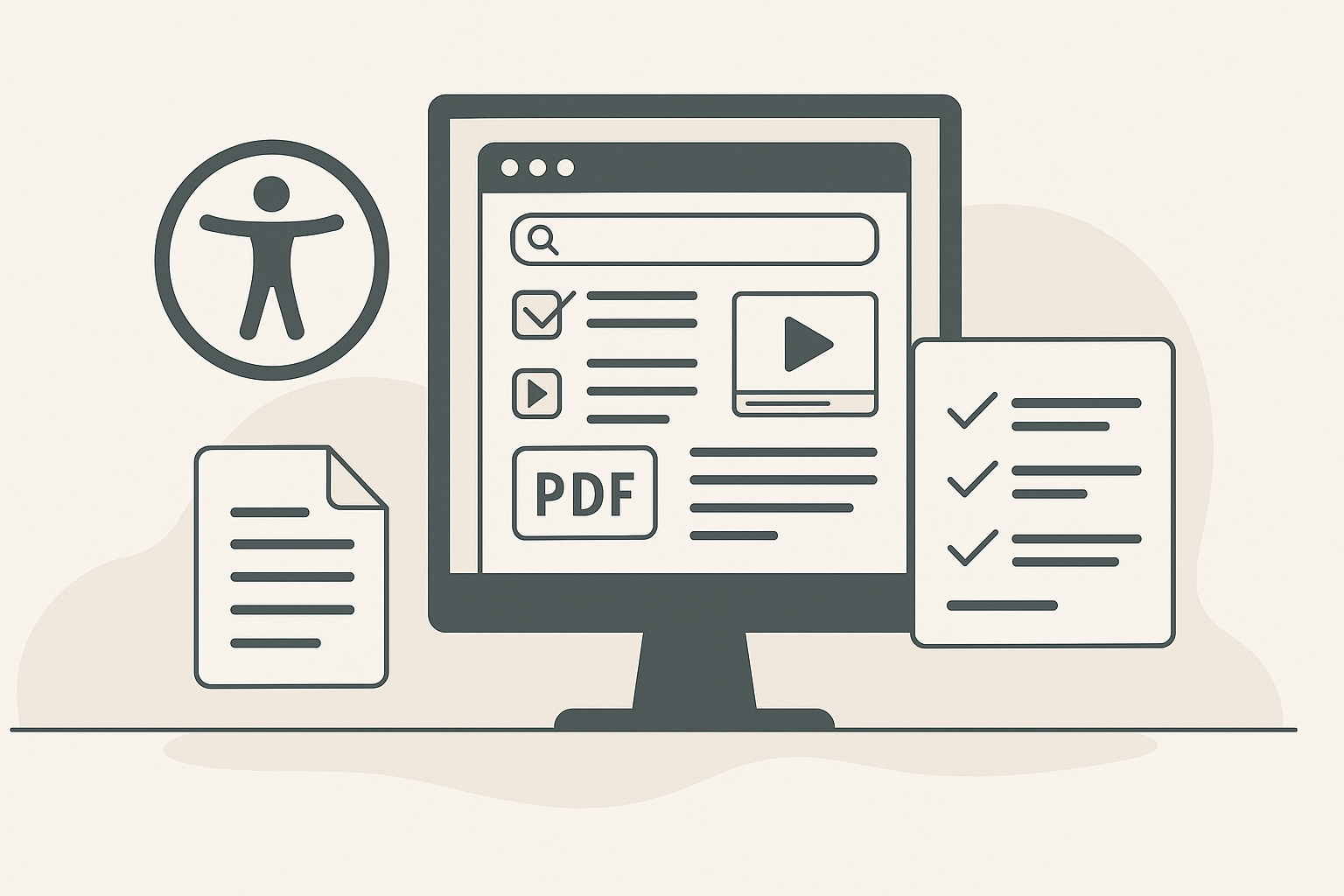Whether you represent a large state agency or a small municipal department, the new Department of Justice (DOJ) rule under ADA Title II introduces enforceable accessibility requirements for websites, documents, and media files. These changes affect all state and local government bodies—big or small.
This guide outlines what public entities must do to ensure that documents (like PDFs, Word files) and media (like audio and video) are accessible by their compliance deadline.
Note: This is a general summary. Consult with legal counsel to confirm how the rules apply to your organization.
Compliance Deadlines
Compliance deadlines are based on the number of people your agency or department serves:
| Entity Type | WCAG 2.1 A/AA Compliance Deadline |
|---|---|
| Large entities (serving 50,000+ people) | April 24, 2026 |
| Small entities (serving under 50,000 people) | April 26, 2027 |
For example, a state legislature’s website is considered a large entity since it serves the entire state population.
What Content Is Covered?
The rule applies to all "web content and mobile apps," including:
- PDFs, Word documents, Excel spreadsheets, PowerPoint files
- Audio and video content (live or pre-recorded)
- 3rd-party content hosted through your platform (e.g., embedded players or document viewers)
If content is part of your website or app and used to inform or provide services to the public, it must meet WCAG 2.1 Level A/AA standards unless exempt.
Accessibility Requirements
For Documents (PDFs, Word, Excel):
- Semantic tagging for screen readers
- Logical reading order
- Descriptive headings
- Alt text for images
- Table headers
- Form field labels
- Language and title metadata
For Media:
- Pre-recorded video: captions and audio description
- Pre-recorded audio: written transcripts
- Live media: captions required (Level A); audio description not required
Exceptions (With Strict Limits)
Certain content may be exempt if it meets all requirements:
1. Archived Web Content
Must meet all of the following:
- Created before your compliance deadline
- Maintained only for historical reference or recordkeeping
- Not required to apply for or access programs or services
- Never modified after being archived
- Stored in a clearly labeled "Archived Web Content" area
2. Large Backfiles of Documents
Large volumes of older files may be exempt—but only if they’re not actively used in public services or programs.
3. Limited Exceptions for Media and 3rd-Party Content
Some exemptions apply to content outside your control or behind secure login, but if used for service delivery, accessible alternatives are still required.
Compliance Checklist
Use this step-by-step process to prepare:
- Inventory all digital documents and media on your website
- Apply the archive test and move qualifying content into an "Archived" section
- Remediate or replace any non-compliant active content
- Offer accessible alternatives on request
- Use accessible-by-default templates and workflows going forward
- Tag content in your CMS and search system to support display and filtering
File Access and Delivery Methods
The delivery method (download or embed) doesn’t change the requirements:
- Embedded media players and document viewers must be keyboard-accessible and standards-compliant
- Download-only files still need to meet accessibility standards unless legitimately exempt
- Offering an accessible HTML version alongside a PDF is a best practice
Design and Architecture Updates
Site Structure
- Create a dedicated “Archived Web Content” area (section, page, or subdomain)
- Use visible headings and labels, not icons alone
- Explain what "Archived" means using links or banners
Search Results
- Split into “Current Content” and “Archived Content”
- Clearly mark archived results with badges and explanations
- Provide a toggle to include/exclude archived results
- Add interstitial banners when users land directly on an archived file
Metadata Fields (Suggested)
- is_archived, archived_on, accessibility_status, remediated_on
- captions_available, transcript_available, program_required
- request_accessible_copy_contact, sla_days
- doc_title, file_format, language, source_system_id
Best Practices for Archiving
- Use consistent file names like:
archived-20260301-annual-report-retx.pdf
legislation-summary-retx-archived-20250410.pdf - Avoid placing archived files in arbitrary paths like /archive/ without also:
- Adding page-level banners
- Using clear visible labels
- Providing a remediation request mechanism
Special Considerations for Small Entities
While small entities have until April 26, 2027, the same rules still apply. The extra time allows for more flexibility in implementation, but the expectation is full compliance by that date.
Start now by:
- Conducting a content inventory
- Planning your archiving and remediation workflows
- Updating policies to require accessible content going forward
Conclusion
This new rule represents a significant shift in how public entities must manage digital content. Whether you're part of a state legislature or a local agency, accessibility compliance is now a clear, enforceable expectation.
At Webdrips, we help agencies design accessible workflows, audit existing content, and implement automation to manage archiving and remediation. Contact us to get your digital content ADA-compliant—on time and on budget.


